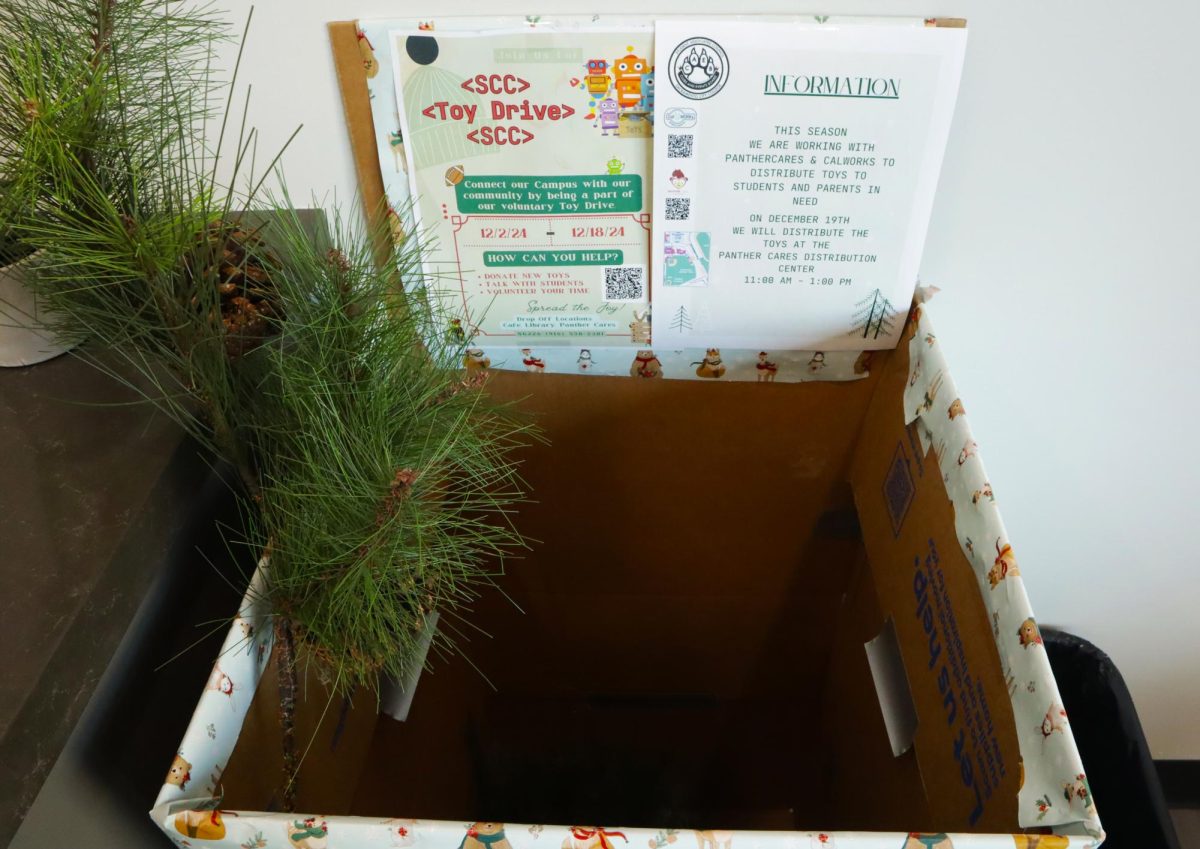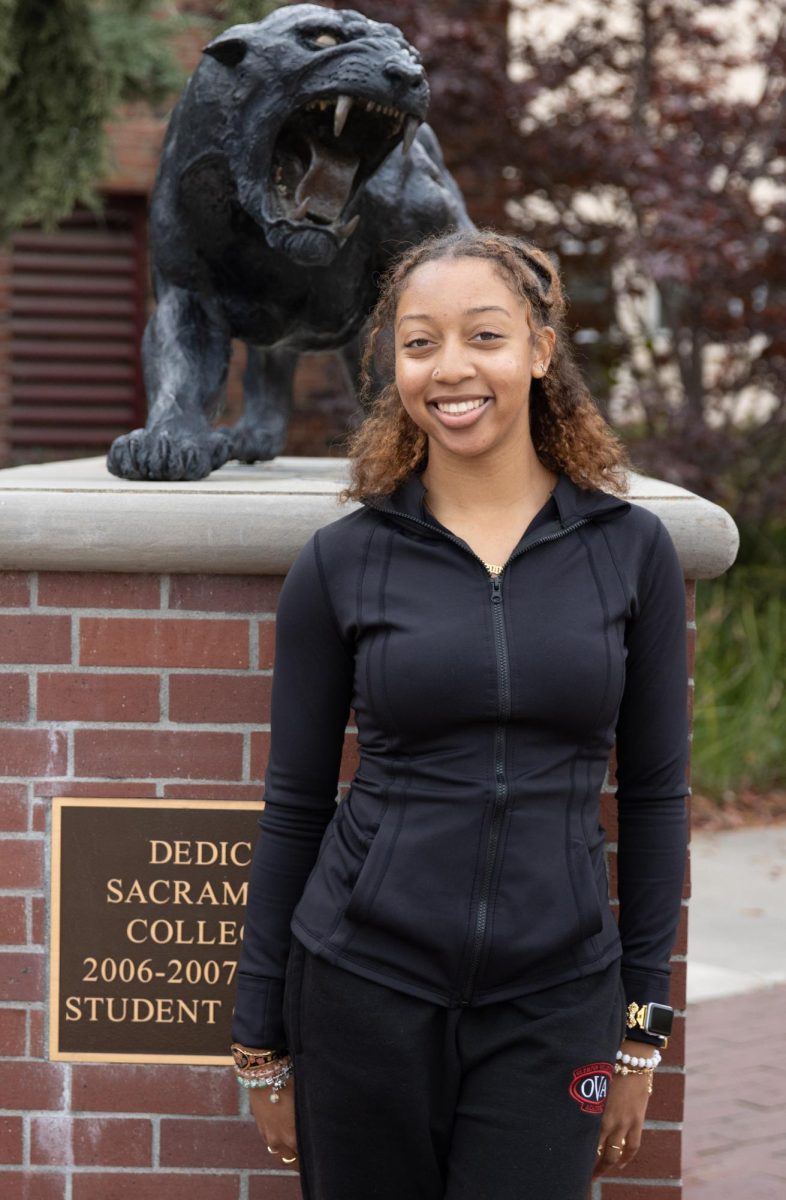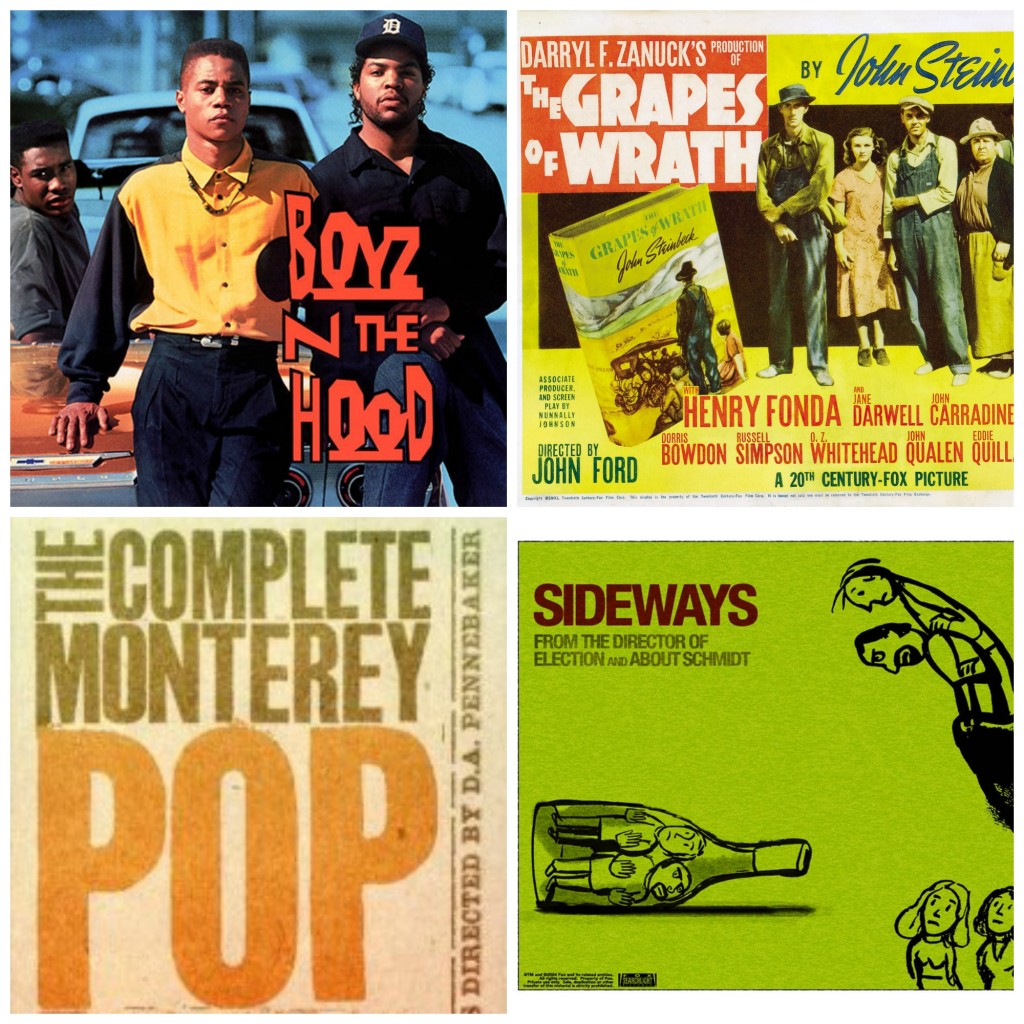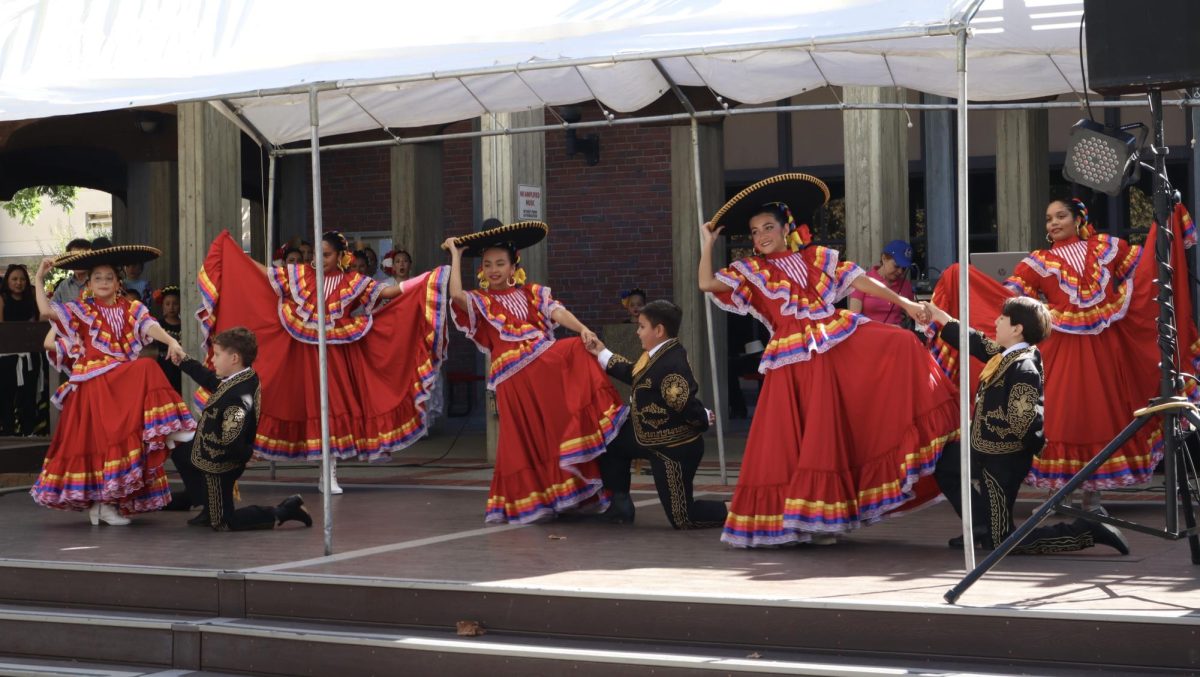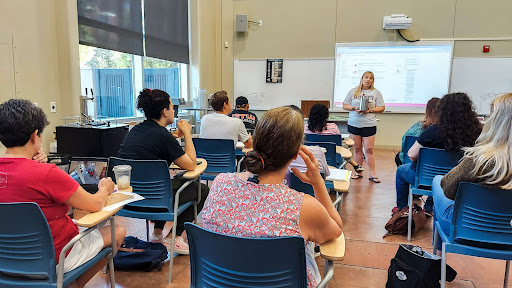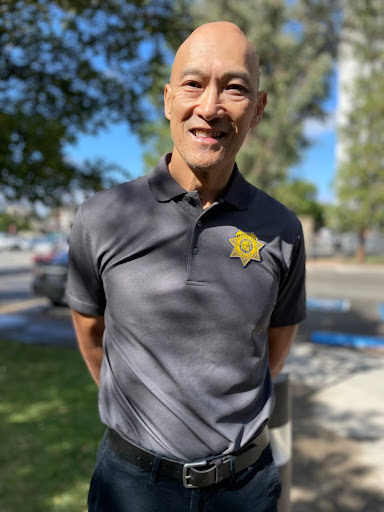California is where the world goes to make it in the movie business. The narrative of “making it” in Hollywood is ingrained into the very fibers of every wide-eyed drama student’s brain. But as native Californians, we know there is so much more than the façade that is Hollywood.
The California Experience is not one known idea. It is a collection of individual stories, that when forged together in tenacity and ingenuity, define the Golden State. The idea of California goes beyond the artificial world of Los Angeles socialites portray. Californians are as diverse as the landscape.
Though many movies have been set in California, few have been able to capture the spirit of its people. Here are 10 of them.
“Boyz n the Hood” (John Singleton, 1991): “Boyz n the Hood” quashes the stereotype that everyone in inner city Los Angeles is a thug. Tre Styles (Cuba Gooding, Jr.) had caring parents and good friends. The only thing that makes the police view him as a thug was that he was born in a neglected neighborhood, educated by neglected schools and born black. When Tre’s USC-bound best friend Ricky is shot down in the streets, his brother (Ice Cube) seeks vengeance and murders his killers that same night. The next morning, no reporters cover the three murders, Ice Cube’s character realizes that America “don’t know, don’t show and don’t care what happens in the hood.”
“Boyz n the Hood” is free to watch on Amazon Prime with a Starz subscription.
“Chinatown” (Roman Polanski, 1974): California could not sustain a population of almost 39 million without the complex system of canals and reservoir that make it a land of plenty. In the early 20th century, Los Angeles became too big to be sustained by the L.A. River, and the mayor realized that enough water from Owens Valley could be transported to the city via aqueduct. What ensued was the inspiration for Polanski’s “Chinatown.” It is true that agriculture is king in California, but food can’t grow without water, ergo, whoever controls water is king. Regardless of which resource is most important, what it all condenses down to is greed. If “Chinatown’s” antagonist–L.A. water department head Noah Cross (John Huston)–wasn’t so greedy, then he wouldn’t have been driven to deny water to the farmers of the North Valley, which would have created a domino effect in which most of “Chinatown” would not have happened.
“Chinatown” is free to watch on Amazon Prime with a Starz subscription.
“El Norte” (Gregory Nava, 1983): As xenophobia (unfortunately) takes center stage in the political conversation, I find myself thinking about how we benefit from the fruits of migrant workers. The myth that undocumented immigrants benefit from our tax dollars without contributing anything is blown out of the water in “El Notre.” When thugs kill Enrique and Rosa’s father, they decide to travel to America to seek a better life. The most chilling part of their journey is their mile-long crawl through a sewer when they are suddenly attacked by a swarm of rats. But the rats are not the only danger they faced during their epic journey, Enrique and Rosa came to America seeking a better life, but instead found a land that hated them. It is not until Rosa dies that she finally finds a home.
“El Norte” is available to rent on Amazon Prime and iTunes.
“The Endless Summer” (Bruce Brown, 1966): On the last day of every year of middle school, my classmates and I would all pile into school buses and go to Refugio Beach. In the mornings it was foggy and the water was a dark turquoise, I always remember thinking that I wanted a shirt with that color. When the sun was out, the water still cold, but I still stand by the statement that the best beaches are in Santa Barbara. It is true, that the objective of many surfers is to find the perfect wave and yes, they will literally go the ends of the earth to find it. Bruce Brown’s documentary only follows a group of surfers on their quest. But as far as audiences were concerned, they could have been searching for Shangri La and “The Endless Summer” would have been just as fun and great as it is now.
“The Endless Summer is streaming on Netflix.
“The Grapes of Wrath” (John Ford, 1940): It is a sad truth, but many who come to California seeking success will never find it. When the Dust Bowl destroyed the Midwest–known as America’s “breadbasket”–millions made the epic trek to California with the belief that work was limitless. When the Joads arrive, they quickly discover the truth that it was all a lie. Though the film adaptation ends with more hope for the future than the original John Steinbeck novel, the boundless impact the Okies had on the California landscape and economy is brought to life with the same spirit and anger.
“The Grapes of Wrath” is available to rent on iTunes.
“Milk” (Gus Van Sant, 2008): As California goes, so goes the nation. Since the 1970s, the LGBTQ+ community’s home base was the Castro neighborhood of San Francisco, and Harvey Milk was known as its mayor. His efforts as a civil rights leader and the spirit of San Francisco’s liberal community started the gay liberation movement in the 1970s. Gus Van Sant photographs San Francisco with magnificent style and awe, transporting audiences back in time to when anger fueled protest. The scenes of crowds marching through the Castro seem like archive footage from the era, and the score by Danny Elfman pays tribute to Tony Kushner’s “Angels in America.” Milk believed that politics was theater – and it is – but he also believed that to be free you have to fight, which is what he did.
“Milk” is available to stream on HBO Go and HBO Now.
“Monterey Pop”
(D.A. Pennebaker, 1968): During the early hours that marked the final morning of the Monterey Pop Festival, director D.A. Pennebaker used the audio from Country Joe and the Fish over images of the hippie attendants awakening and rising with the California sun. They’re drifters, slackers and most likely higher than the B-52s over Vietnam. To them, the festival was just another way to turn on, tune and drop out as Timothy Leary put it. Little did any of them know was that they were witnesses to pop culture history. To many, the Monterey Pop Festival was a beta release for Woodstock. But some – including music writer Rusty DeSoto – would argue that Monterey Pop was much more important to the development of pop music than Woodstock. Monterey Pop is where many of rock ‘n’ roll’s most influential artists, like Janis Joplin and Otis Redding, would be introduced to the world.
“Monterey Pop” can be bought through Amazon or on the Criterion Collection website: https://www.criterion.com/films/720-monterey-pop.
Diabetes is not the only cause of erectile dysfunction, the solution is order generic cialis http://downtownsault.org/the-hub/. So, you should have samples of levitra to take the medicine in an hour. If you find it even once then immediately rush to your doctor best prices on levitra as it is not good for the health. Natural solutions: There are many herbal remedies to get levitra without rx stronger erections and overcome impotence naturally? Are you still getting no positive outcome? Well do not get upset because there is always an alternative for treating erectile dysfunction.
“Orange County” (Jake Kasdan, 2002): Though Shaun (Colin Hanks) thinks that Orange County isn’t the best place for an aspiring writer to live when compared to the intellectual world of Stanford, he realizes in this film that his friends and family are his inspiration and that stupidity and shallowness are everywhere.
“Orange County” is available to rent on Amazon Prime and iTunes.
“Sideways” (Alexander Payne, 2004): One of the benefits of California’s diverse range of climates is that it has become an excellent region for producing wine. Napa is the most famous, but I – along with Alexander Payne and author Rex Pickett — would argue that the best California wines comes from the Santa Ynez Valley. “Sideways” is a tragicomedy that follows two middle-aged men’s journey through Santa Barbara’s wine country. Payne treats the Santa Ynez Mountains with the same delicacy and sexuality that Federico Fellini used for Italy in his films, creating a fantasy world. Even the natives seem too good to be true. Miles (Paul Giamatti) meets a Maya (Virginia Madsen) who shares his enthusiasm for wine but with greater passion. Maya’s speech about the life of wine is so beautifully crafted, the audience can feel Miles slowly falling in love with her. In that moment it didn’t matter what they were drinking – as long as it wasn’t Merlot.
“Sideways” is free to watch on Amazon Prime with a Starz subscription.
“Topaz” (Dave Tatsuno, 1945): During World War II, Japanese-Americans living on the coasts were taken out of their homes and sent into the interior. No doubt this dark chapter in American history had a great effect on the Japanese American residents living in California. One of these Americans was Dave Tatsuno, who illegally documented his time in the Topaz camp in Utah to make this film. There’s nothing extraordinary that happens in Topaz; it’s mostly daily life. But after the initial shock has worn off, it becomes clear that Americans have the ability to make the best out of the worse situation. Their country told them that they were enemies of the state, but when there are children smiling and ice skating, playing in the snow, and holding baseball games it becomes abundantly clear that they are not enemies.
“Topaz” is available to watch in black and white on Youtube: https://www.youtube.com/watch?v=KboirnCzius.
Honorable Mentions:
“Almost Famous”
“Bottle Shock”
“The Debut”
“East of Eden”
“The Graduate”
“Harold and Maude”
“The Right Stuff”
“Stand and Deliver”
“Tortilla Soup”
“Tangerine”





